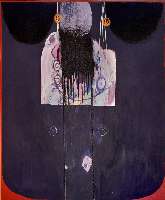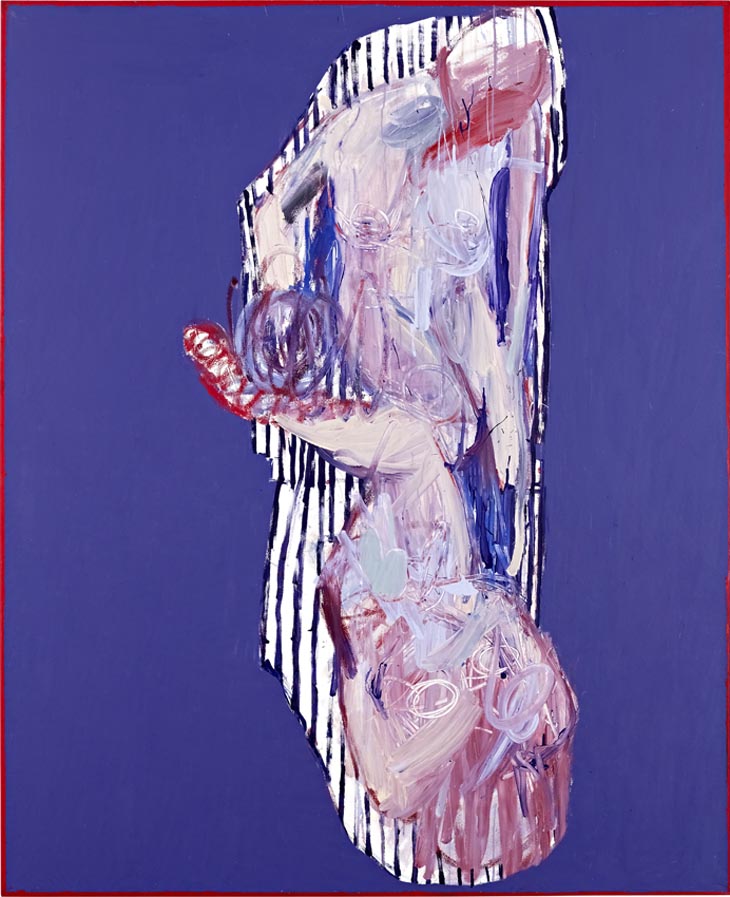
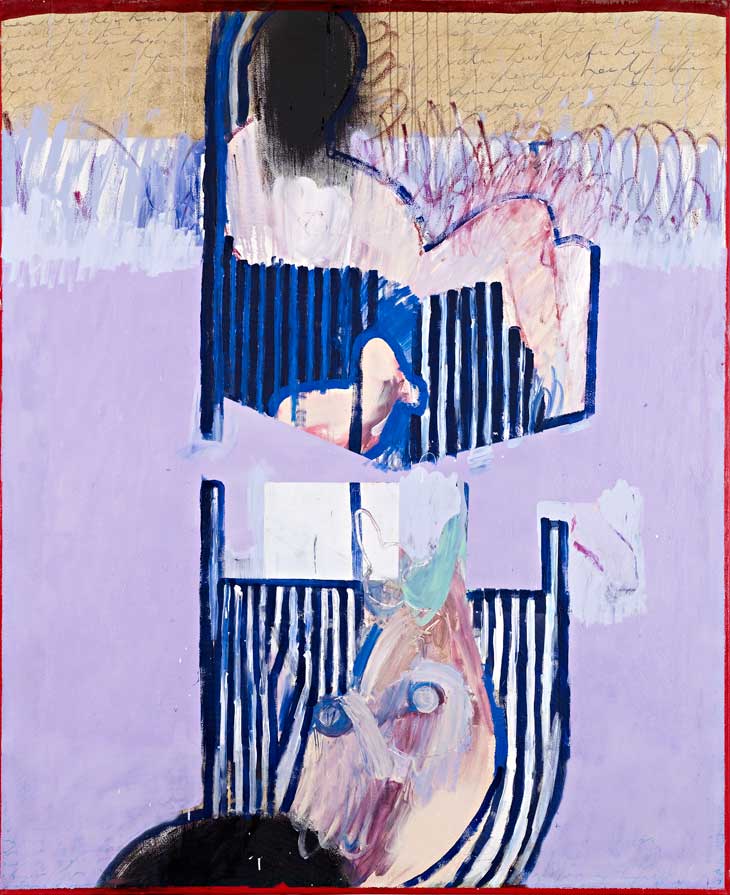
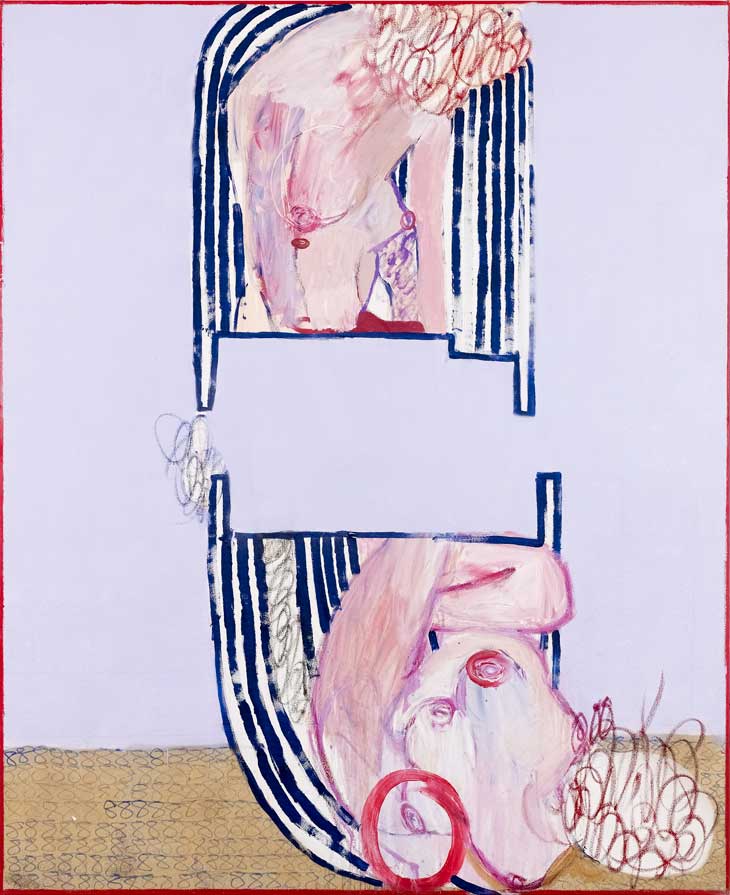
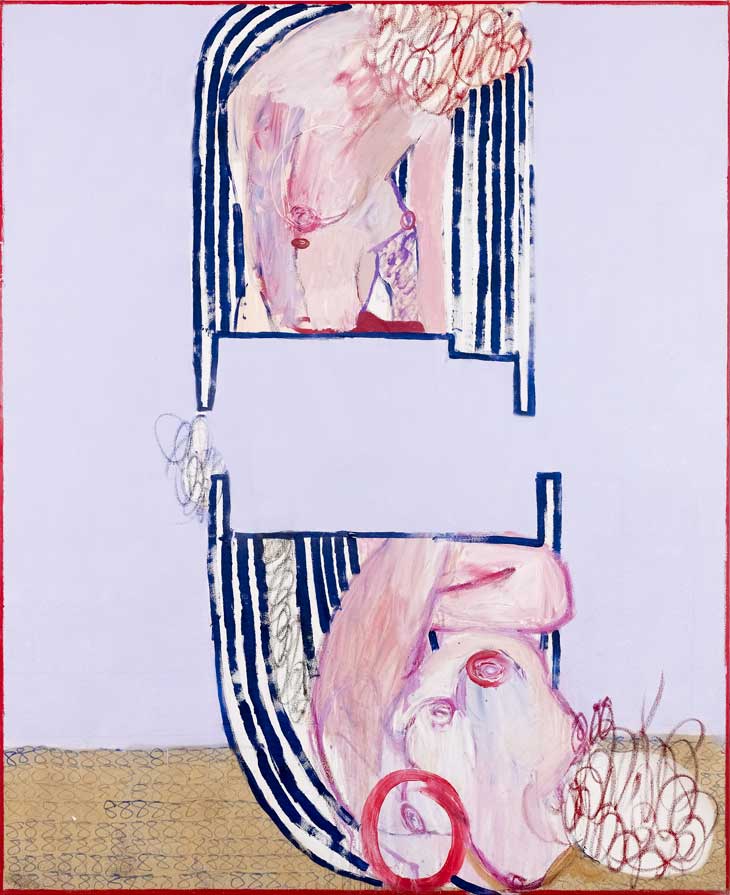

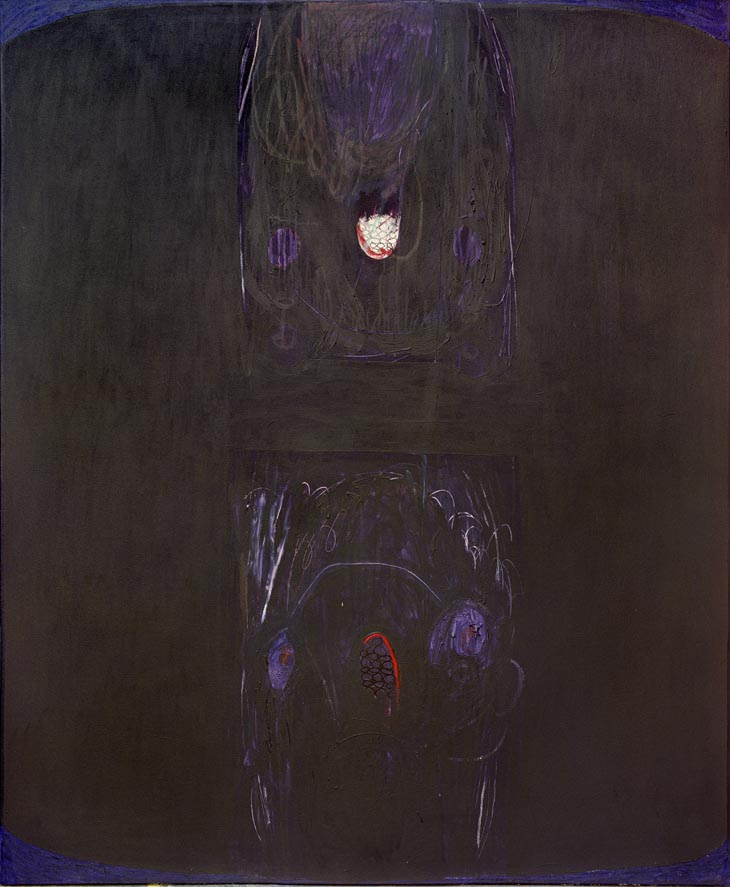
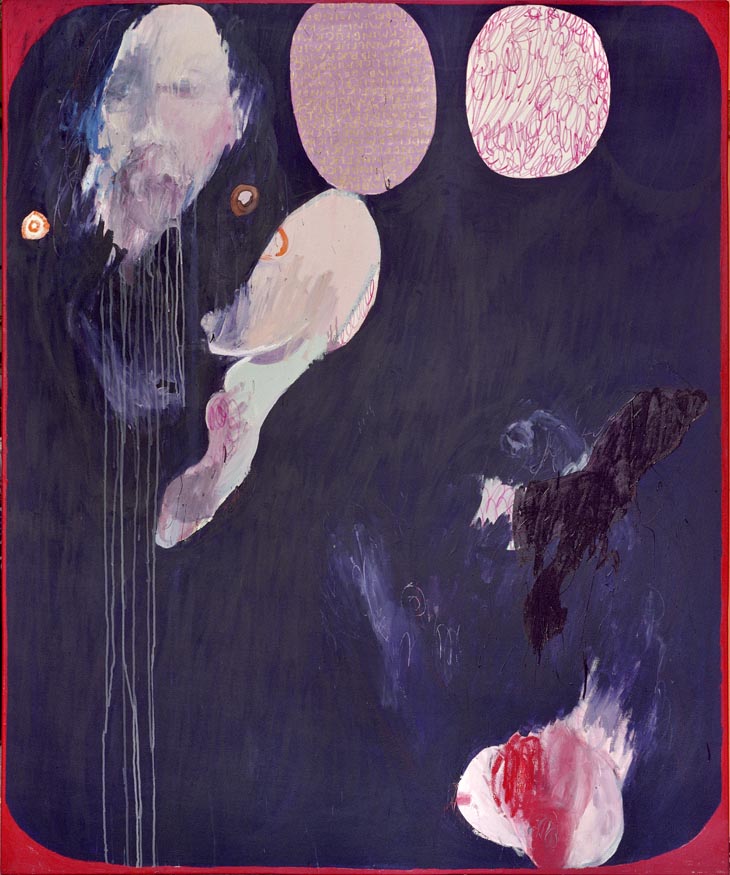
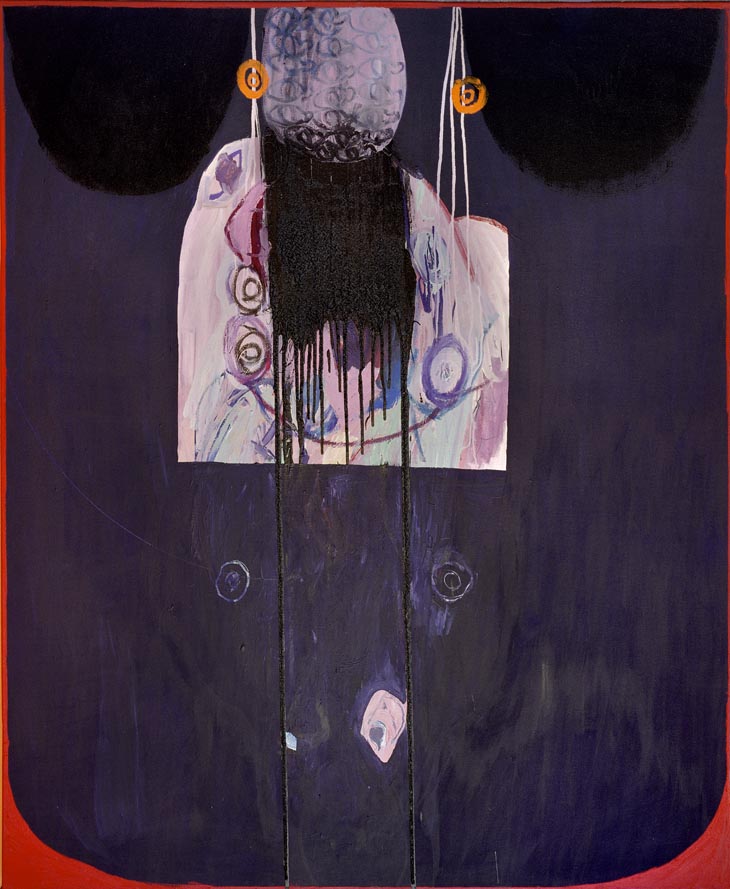
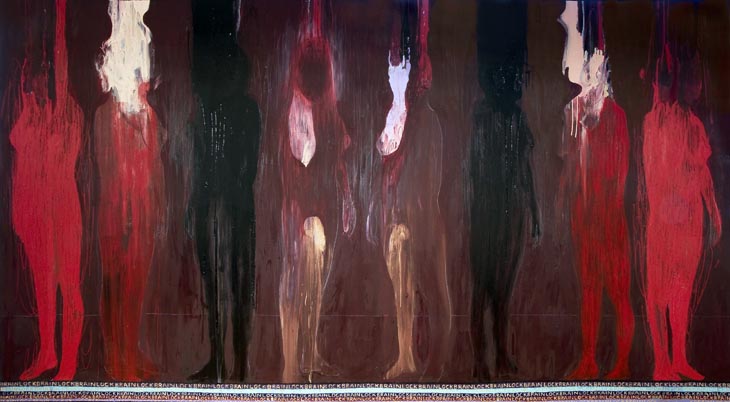
Robert Fry
Robert Fry’s Drawing Room Study series evolved from a group of etchings he made in 2005. For the etchings Fry drew himself drawing a model. Fry reworks these compositions in his paintings: In Drawing Room Study 7, two figures are positioned to mirror each other, bound by the strange intimacy of their relationship. Fry renders this scene as a site riddled with contradictions and tension. Engulfed in a calming purple-ish field, the bodies are made to seem visceral and crude, suggesting both a physical and emotional energy. “I try to create a relationship between the physicality of materials and psychological terrains,” Fry says. “I’m interested in conveying a slightly brutal picture of the human condition.”
“Etching can involve a vast amount of precision and technique and has its constraints. The immediacy of painting is very different; these works express a kind of freeness and looseness in the way paint is applied. They attempt to embrace the versatility and multitude of ways in which paint can be used. I’m fascinated by the spectrum of paint as a medium, its vastness and its complexity. Drawing Room Study 4 repeatedly engages different materials within the composition. It attempts to achieve meaning through their varied application, and create relationships between the properties of the materials that construct the work. The Drawing Room Study series are equally concerned with the way they’re made as the themes the pictures explore; it’s perhaps indistinguishable as to which is of greater importance.”
Fry’s interest in psychology is explored through both his process and subjects. By working from etchings, the origin of Fry’s images is already an inverted field; a metaphorical subconscious terrain which Fry then explores and traverses though paint. This idea of paralleled existence, a state between internal and external experience, is envisioned through his use of the doubled figure. Drawing Room Study 5 presents a figure and its equal reflection. Fry renders these with a frenetic physicality, as if their bodies are unfixed or unravelling, a sensation that’s heightened by the contrasting geometric framing. Along the bottom of the canvas the number 8 is repeated in obsessive scrawl, a symbol of perfection and infinity, a tantalising allusion to a tendency to obsession, which at times has both tormented and driven his work.
Fry’s Purple Study series is a continuation of his Drawing Room Study works; however, in these newer pieces he was thinking about figuration and painting in different ways. The colour purple is deeply significant for Fry: it is loaded with symbolic association to mysticism, ritual and loss, and is technically one of the most difficult hues to work with because of its instability. In Purple Study 2 his canvas is like a cavernous space engulfing two figure-forms. Their presence is more a tactile expression than a visual motif; they are drawn with primal and urgent gestures, as if scratched or carved into the velvety surface. Their abstraction is pushed to its limit: the figures become almost lost, a mere suggestion in the mind of the spectator. “I’m attempting to encompass a plethora of media in my practice as a painter. Purple Study 5 is constructed from 6 different materials. For example, the oval form at the top of the canvas containing scribbles is drawn in marker pen, the text is enamel, and the red border is oil. Through their quality as a raw material, their application and form, these all communicate with the viewer in different ways, as well as with one another within the composition. At the heart of this is a concentrated engagement with the scope of painting. The self-deconstruction of painting is of huge importance to my work. Purple Study 5 is about paint, painting, scale and colour.†“In the Purple Study 3 the suspended central figure is barely conceivable as a figure, yet the painting retains a figurative quality. In the painting two figures are still in dialogue facing one another but have become significantly abstracted. In this work there is a clear relation between figuration and abstraction and I like the idea of making spaces for the viewer to fit something into. Here the space under the suspended torso is like a broken down body. The two circles that sit on either side of the vertical lines describe nipples. I’m interested in reducing and removing key elements of the figure, forcing the viewer into a position of including their imagination in the incomplete image of the human form.†Red 1 is an enormous painting and when standing before it the viewer is confronted by a row of figures the same size as themselves. Fry executes this painting with a burning intensity; his red-based palette and loose gestural brushwork create a fixated or hypnotic effect, as if staring at flames. Though the figures are scaled to occupy real space, they are more like ghosts or apparitions, and have an otherworldly or transient quality. Fry conceives them not as separate individuals, but aspects of one single person. The words ‘brain lock’ are repeated along the bottom of the painting; it’s a psychological term used to describe an obsessive or compulsive way of thinking.



